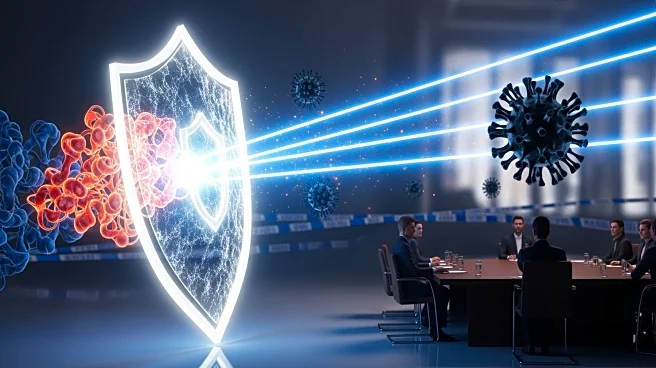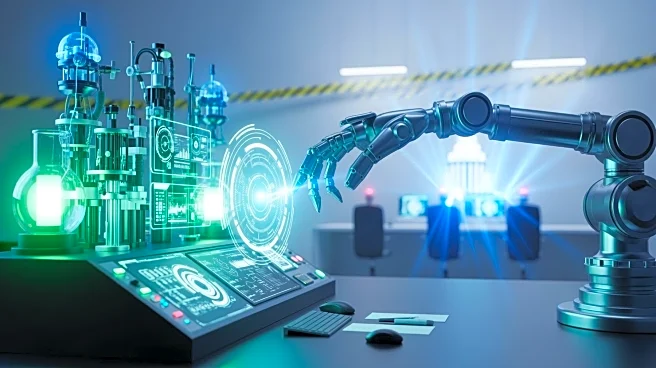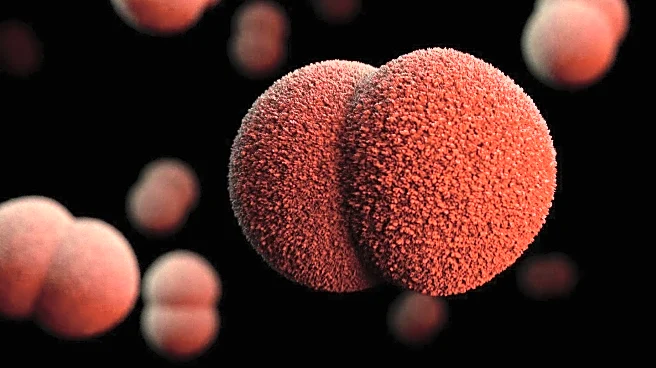What's Happening?
Researchers have identified a group of approximately 100 immune proteins within cells that play a crucial role in defending against viral infections. These proteins remain inactive until a virus invades the cell, at which point they form a crystal structure
that activates enzymes known as caspases, leading to cell death. This process, called pyroptosis, is distinct from apoptosis as it triggers inflammation. The study, conducted by Randal Halfmann's team at the Stowers Institute for Medical Research, highlights how these proteins can spontaneously crystallize over time, potentially leading to cell death and inflammation even without viral invasion. The findings suggest that this mechanism is an ancient feature of the immune system, present in early animals and bacteria.
Why It's Important?
The discovery of this cell death mechanism has significant implications for understanding how the immune system functions and its role in aging and inflammation. By elucidating how immune proteins can spontaneously trigger cell death, researchers may find ways to mitigate aging-related inflammation, potentially extending cell lifespan. However, this could also weaken the immune response, presenting a trade-off between longevity and immune strength. The study provides insights into the evolutionary origins of this mechanism, suggesting its importance in communal living organisms, where sacrificing infected cells can protect the larger community.
What's Next?
Future research may focus on developing methods to prevent the crystallization of these immune proteins, aiming to reduce inflammation associated with aging. Scientists might explore therapeutic interventions that balance the need for a robust immune response with the desire to minimize unnecessary cell death. Additionally, understanding the evolutionary aspects of this mechanism could lead to broader applications in biotechnology and medicine, potentially influencing treatments for diseases characterized by excessive inflammation.
Beyond the Headlines
The study challenges traditional views on protein behavior, showing that solid protein clumps, often considered pathological, can be essential for cellular function. This new understanding of protein crystallization could lead to innovative approaches in cellular biology, influencing how scientists think about cellular decision-making and energy storage. The research also underscores the complexity of immune system evolution, highlighting the intricate balance between individual cell survival and community protection.













